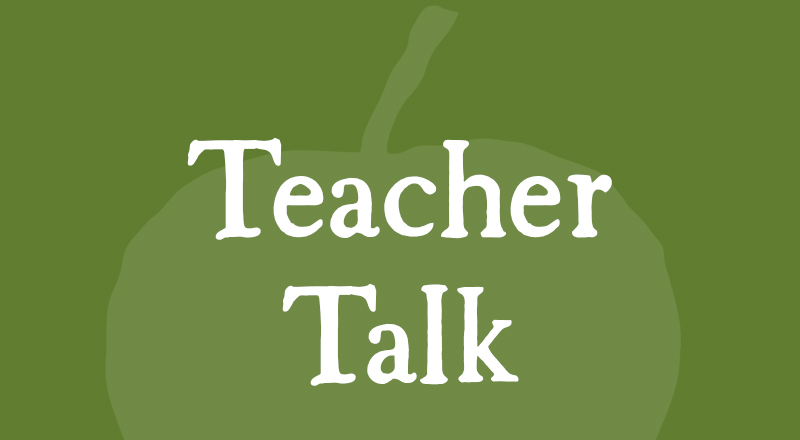Curriculum connections: Health and physical education

This edition of Teacher Talk focuses on making more Curriculum Connections – this time between a kitchen garden program and the Health and Physical Education learning area.
In the Australian Curriculum, the Health and Physical Education learning area has two strands:
- personal, social and community health
- movement and physical activity.
‘Personal, social and community health’ contains three sub-strands that are particularly relevant to learning opportunities – hands-on and theoretical – in both the kitchen and garden. These sub-strands are:
- being healthy safe and active
- communicating and interacting for health and wellbeing
- contributing to healthy and active communities.
The garden is a natural match for the strand relating to ‘movement and physical activity. In the garden, students are actively involved in moving their body in different ways as they engage in planting, tending and maintaining a garden, and harvesting its produce. The garden environment curbs sedentary behaviours and provides plenty of learning opportunities outdoors, in a natural environment (as opposed to a built environment).
Bear in mind that alongside both these strands there are 12 focus areas in this learning area. One in particular – food and nutrition – applies from Foundation through to Year 10 and is very pertinent to a kitchen garden program.
To inspire your curriculum planning, the following examples discuss how to connect the kitchen and the garden to Health and Physical Education, intertwining the food and nutrition focus area with a kitchen garden program’s food-related learnings.
Primary years
A kitchen garden program can easily meet a range of Health and Physical Education needs in the primary curriculum.
Students in the Foundation year can identify actions that promote health, safety and wellbeing (ACPPS006). Students can start with grouping foods into categories. Consider the different foods that can be consumed ‘always’ and ‘sometimes’. Students can explore the garden for herbs, vegetables and fruit for the ‘always’ category, while categorising fruit-based desserts ‘sometimes only’ in the kitchen.
This learning can carry into Years 1 and 2, where students recognise situations and opportunities to promote health, safety and wellbeing (ACPPS018). Students explore physical activity in their garden activities. They learn about the physical actions and skills they need for planting and harvesting in the garden, as well as how to perform these actions safely. Students can then translate these skills for use in the home environment, and elsewhere.
In Years 3 and 4, students have a chance to describe strategies to make the classroom and playground healthy, safe and active spaces (ACPPS040). This can be achieved through establishing a productive garden space at the school, or maintaining one that’s already established. This garden can be used to develop sustainable-classroom practices such as composting, building worm farms and recycling.
Year 5 and 6 students can explore and investigate the role of preventive health in promoting and maintaining health, safety and wellbeing for individuals and their communities (ACPPS058) in the kitchen and in classes related to food and nutrition. Introduce the students to a diet reflecting the Australian Guide to Healthy Eating. Students can choose a recipe from the resources available at the Kitchen Garden Foundation (recipes adhere to the Australian Dietary Guidelines) and examine how their dish meets the recommendations outlined in the Guide to Healthy Eating. After making the dish, they sit down together to share the meal and create social connection.
Secondary years
A kitchen garden program can just as easily meet a range of Health and Physical Education needs in the secondary curriculum.
In Years 7 and 8, students can investigate and select strategies to promote health, safety and wellbeing (ACPPS073). Students do this by developing a snack or lunch option that would support their own wellbeing during a day at school. Students design and create their snack or lunch, keeping the focus on fresh, seasonal, delicious food. They then promote their ideas to the school community.
In Years 9 and 10, students will both propose, practise and evaluate responses in situations where external influences may impact on their ability to make healthy and safe choices (ACPPS092) and plan, implement and critique strategies to enhance health, safety and wellbeing of their communities (ACPPS096). Students meet these outcomes by using critical analysis to examine the benefits of making healthy food choices, and factors influencing these choices. For example: they compare and contrast the impacts of fresh, seasonal produce to imported, packaged foods, or of homemade meals to fast food; or they research what role government policy has on health awareness in schools or sustainable food production. Students can use this research to lobby a local council or government about the role they can play in encouraging positive food habits. Alternatively, students can prepare a presentation on their experience of being involved in a kitchen garden program and how learning in this area will support their ongoing health and wellbeing for life.
Happy teaching!

Steph Davies, Education Advisor
< Back to Latest News
